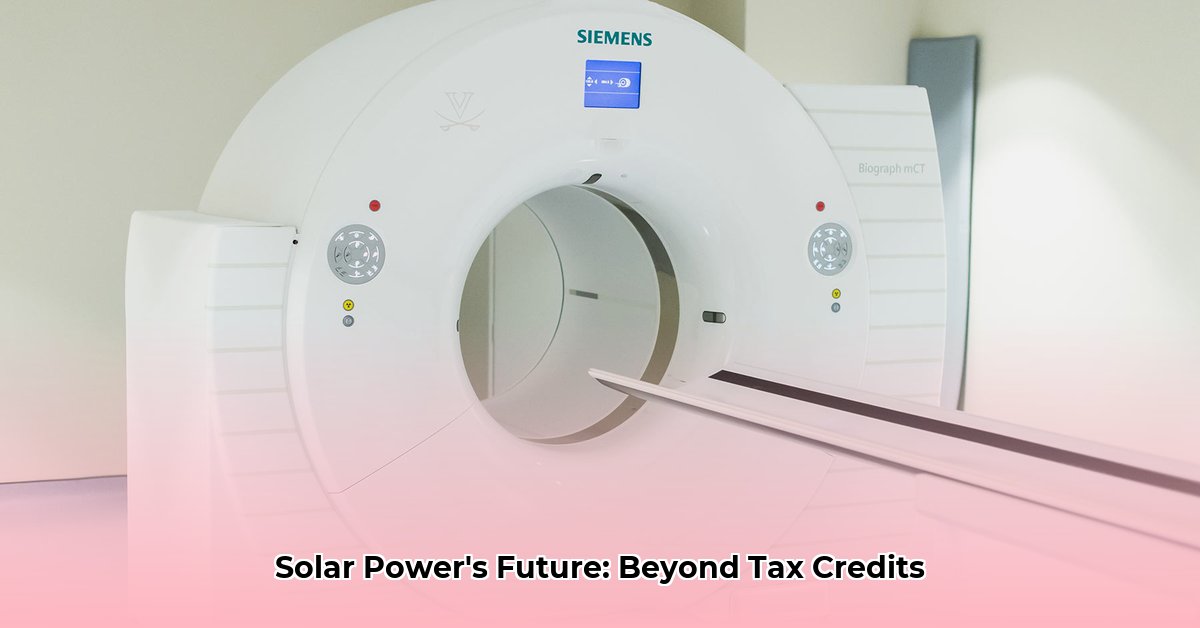The Connecticut solar energy sector is undergoing significant changes following the expiration of federal tax credits. This news analysis explores the challenges, opportunities, and strategies for stakeholders to navigate this evolving landscape, emphasizing the importance of state-level incentives and streamlined permitting processes. We’ll explore actionable steps, including how to navigate CT residential solar incentives post-2025 tax credit expiration and promote sustainable energy transition. For more on solar incentives in other states, check out this resource.
CT Solar Energy: Charting a Course Through Change
The termination of federal tax credits, including the Investment Tax Credit (ITC), has increased the upfront cost of solar panel installation, potentially deterring homeowners and creating uncertainty within the industry, requiring innovative financing solar projects options and a focus on energy storage solutions. This situation is further complicated by ambiguous government regulations regarding “in-construction” projects, leading to delays and complications for solar companies. While challenges exist, the long-term outlook for solar power in Connecticut remains promising, provided the industry adapts, innovative solutions are developed, and the state government responds effectively by enhancing solar energy production.
The Solar Rollercoaster: Navigating Market Fluctuations
The consensus is that the expiration of the federal tax credit will make solar systems more expensive, impacting the economics of solar energy. This increased cost could lead homeowners to reconsider installing solar panels, thereby affecting market dynamics. Smaller solar companies may face increased pressure, potentially leading to mergers or acquisitions by larger entities. The ambiguity surrounding “in-construction” rules is causing project delays, affecting companies’ ability to meet deadlines. Is this uncertainty temporary, or a long-term impediment to growth, impacting the state’s renewable energy goals?
Opinions diverge on the severity of the downturn, with some experts predicting a significant market decline, while others anticipate only a minor dip. Optimists believe the industry will adapt and innovate to overcome these challenges. The future success of Connecticut’s solar sector hinges on the state government’s responsiveness, the industry’s resourcefulness in finding solutions and improving the economics of solar energy, and the public’s continued interest in solar panel installation.
Who Feels the Heat? An Uneven Impact Assessment
The impact of these changes varies across the solar energy landscape. Homeowners face higher costs for solar panel installation. Projects currently in progress, particularly those nearing deadlines, must find ways to proceed efficiently. Shared solar projects are also affected, though potentially less drastically. Affordable housing initiatives relying on state programs face significant risks, as increased expenses could make solar adoption more challenging for low-income families, exacerbating existing inequalities. Will this disproportionately affect vulnerable communities and hinder solar power usage?
The efficiency of state programs and permitting processes will significantly influence the speed of project completion and, consequently, the overall health of Connecticut’s solar industry, helping the state achieve its renewable energy storage goals and encourage solar panel installation. Furthermore, consumer awareness of available rebates and incentives will play a vital role in sustaining demand.
What Can We Do? Stakeholder-Specific Strategies
Different stakeholders need to take specific actions to navigate this evolving landscape effectively.
- Residential Solar Installers: Focus on completing existing projects promptly and offering diverse financing options such as solar leases or Power Purchase Agreements (PPAs). Explore partnerships with financial institutions to offer attractive loan products.
- Community Solar Developers: Prioritize projects nearing deadlines and collaborate closely with regulators to mitigate any challenges. Engage with community organizations to increase participation and awareness.
- State Agencies (PURA & DEEP): Streamline the permitting process, consider removing limits on solar projects, and explore funding opportunities to support the industry. Enhance public awareness campaigns to promote state incentives and the benefits of solar energy.
- Homeowners: Explore various financing options, carefully evaluate long-term energy cost savings before making investment decisions, and seek guidance from trusted solar advisors.
These stakeholders play a crucial role in Connecticut’s solar energy success. By finding ways to make new business investments to navigate new regulations, they create a more predictable environment conducive to growth and innovation.
Risks and Rewards: A Balanced Perspective
The residential solar market in Connecticut faces several key risks, but these risks can be mitigated through proactive measures and strategic decision-making.
| Risk Factor | Likelihood | Impact | Mitigation |
|---|---|---|---|
| Tax Credit Expiration | Very Likely | Very Significant | Expedite project completion; offer diverse financing options. |
| Regulatory Uncertainty | Moderately Likely | Significant | Stay informed on regulations; engage with state agencies. |
| Increased Upfront Costs | Very Likely | Significant | Offer financing; advocate for state incentives; reduce overall costs. |
| Market Slowdown | Moderately Likely | Moderate | Diversify services; adapt strategies; focus on efficiency. |
| Supply Chain Disruptions | Possible | Moderate | Diversify suppliers; maintain inventory; communicate proactively. |
Decoding the Rules: Streamlining Regulatory Navigation
Vague language regarding “in-construction” projects introduces legal ambiguities and potential lawsuits, further complicating matters for the solar industry and impacting overall solar energy production. State government intervention is crucial to mitigate the adverse effects of federal policy changes. Clear communication, streamlined processes, and consistent enforcement are vital for navigating challenges and capitalizing on Connecticut’s promising solar energy future. Transparency in regulatory decision-making is also essential to foster trust and confidence among industry stakeholders.
How to Navigate CT Residential Solar Incentives Post-2025 Tax Credit Expiration
The federal Investment Tax Credit (ITC) reduction after 2025 necessitates a strategic approach to leveraging Connecticut’s remaining solar incentives and maximizing solar energy investment.
- Connecticut offers sales and property tax exemptions and the Smart-E loan.
- Battery storage incentives are becoming increasingly attractive.
- Careful planning and comparison shopping are essential for maximizing savings and lowering solar energy costs.
Understanding the Shifting Landscape
The reduction of the 30% federal ITC is significant, but Connecticut’s state-level incentives continue to offer substantial benefits for homeowners considering solar energy adoption and supporting the sustainable energy transition.
Unpacking Connecticut’s Remaining Incentives
Key state-level incentives include:
- Sales Tax Exemption: Connecticut exempts solar system purchases from sales tax, providing immediate savings.
- Property Tax Exemption: Solar panel installations don’t increase property tax assessments, protecting your investment.
- Connecticut Green Bank’s Smart-E Loan: Low-interest financing for energy-efficient home improvements, including solar panel installation, makes upfront investment more manageable. Rates range from 6.99% for a 5-year loan to 7.99% for a 20-year option.
- Energy Storage Solutions Program: Rebates are available for homeowners adding battery storage to their solar systems, addressing the intermittency of solar energy and promoting renewable energy solutions by improving grid reliability.
- Residential Renewable Energy Solutions (RRES) Program: Provides renewable energy tariffs to compensate residential solar owners for the power their systems produce and provide to the local electric grid.
Strategic Steps for Maximizing Savings
- Research: Explore all available incentives, including federal, state, and local programs, to gain a comprehensive understanding of available benefits.
- Compare: Obtain quotes from multiple installers, ensuring they factor in all applicable state and federal incentives for the best possible price and consider long-term maintenance costs.
- Finance: Utilize financing options such as the Smart-E loan to optimize costs and make solar energy more accessible.
- Consider: Evaluate the benefits of adding battery storage, as rebates can make this valuable addition significantly more affordable and enhance your solar energy system, promoting grid stability.
- Monitor: Stay updated on any changes to Connecticut’s solar incentive programs, as state regulations evolve, and promptly adapt your strategies accordingly.
Addressing Potential Challenges
Connecticut homeowners can achieve significant financial and environmental benefits by adopting solar if they strategically navigate available incentives and consider long-term factors. With strategic solar energy investment and careful monitoring, these goals can be realized. However, understanding the complexities of eligibility requirements and navigating bureaucratic processes can be challenging, highlighting the need for accessible resources and expert guidance.
Community Solar In Connecticut- Master-Metered Multifamily Solutions
Connecticut’s commitment to achieving its 2040 zero-carbon electricity goal is supported by substantial funding, including the $62.45 million Project SunBridge EPA grant, and community solar energy benefits, enhancing the sustainable energy transition.
- Project SunBridge and existing community solar programs aim to enhance solar energy access, particularly for low-income residents.
- Master-metered multifamily solutions offer affordable clean energy for apartment dwellers.
- Ensuring equitable distribution and program effectiveness remain key challenges, requiring collaboration among state agencies, utilities, and community stakeholders.
Navigating the Complexities of Connecticut’s Community Solar Landscape
Project SunBridge, funded by an EPA grant, aims to facilitate solar power adoption for low-income households through financial assistance. Existing community solar programs offer monthly bill credits to incentivize participation and promote solar energy production. How can we ensure equitable access and effective resource allocation for these communities, maximizing solar power usage?
Master-Metered Multifamily Solutions: A Key Piece of the Puzzle
Master-metered multifamily solutions offer a pathway for apartment buildings to benefit from community solar, even without individual rooftop installations, promoting solar energy production in urban settings and furthering the sustainable energy transition. This is particularly crucial for renters and those who may not have the option to install individual solar panels.
Unlocking the Potential: Addressing the Challenges
Detailed analysis of Project SunBridge’s financial support mechanisms and transparent metrics for evaluating the equity and effectiveness of these initiatives are crucial. Without rigorous data on program impact and demographic representation, we risk widening existing disparities. This needs to be addressed for program transparency. Furthermore, addressing logistical challenges, such as coordinating installations across multiple units and ensuring fair distribution of benefits among tenants, is essential for successful implementation.
Clear communication and strong collaboration between state agencies, utilities, and community organizations are essential for success, promoting the sustainable energy transition and ensuring that the benefits of community solar reach those who need them most.
A Look Ahead: Leveraging Long-Term Opportunities
The Inflation Reduction Act and other state incentives present significant opportunities, necessitating strategic planning to maximize their impact beyond initial tax credits and foster long-term sustainability in the solar sector. This includes exploring innovative financing models, promoting workforce development initiatives, and investing in research and development to drive down costs and improve system performance.
Step-by-Step Guide- Navigating Ct Solar Permitting: Post-Tax Credit Strategies for Connecticut’s Agri-Solar Sector
Connecticut’s solar permitting process creates unique challenges for agricultural landowners. Streamlined permitting is crucial for expanding solar adoption in the agricultural sector, enhancing solar power usage.
- A lack of tailored guidance for agricultural solar projects hinders progress.
- Collaboration between stakeholders is key to overcoming obstacles.
- Efficient permitting amplifies the importance of post-tax credit strategies to ensure profitable and easier solar power transition.
Understanding the Connecticut Solar Permitting Landscape
Navigating Connecticut’s solar permitting process requires a clear roadmap, particularly for agricultural landowners integrating solar into their operations. How can regulations better accommodate the specific needs of agricultural solar projects, promoting sustainable energy transition within the agricultural sector?
The Unique Needs of Agri-Solar
Integrating solar into agricultural operations requires careful consideration of shading impacts on crops as well as panel placement to avoid disrupting farming operations. Additionally, ensuring minimal impact on soil health and water resources is crucial for maintaining the long-term viability of agricultural land. Balancing energy production with agricultural productivity is essential for successful agri-solar projects.
A Step-by-Step Guide for Agri-Solar Permitting in Connecticut
- Site Assessment: Evaluate land for sunlight, soil, and infrastructure to inform project feasibility. Conduct thorough environmental assessments to identify potential impacts on sensitive ecosystems.
- Pre-Application Consultation: Engage with local zoning departments to address potential concerns preemptively. Establish open communication channels with neighbors and community members to address any concerns or questions.
- Permit Application Submission: Provide necessary documentation that adheres to municipal regulations as part of a complete and comprehensive application. Clearly articulate the project’s benefits to the community and the environment.
- Review and Approval: Municipal authorities review the application; responsiveness affects the overall timeline. Advocate for transparent and predictable permitting timelines.
- Construction and Inspection: Construction must adhere to building codes and safety standards. Utilize best management practices to minimize environmental impacts during construction.
- Connection to the Grid: Connect the solar system to the electric grid after construction is completed and inspected, increasing solar power usage and contributing to the state’s renewable energy goals.
Post-Tax Credit Strategies: Maximizing Returns
Efficient permitting enhances the financial viability of solar projects. Post-tax credit strategies become even more critical when considering the cost and time involved in permitting. Implementing innovative business models, such as community-shared agri-solar, can also enhance financial returns.
Overcoming the Hurdles: Collaboration is Key
Fostering collaboration between landowners, municipalities, and energy companies is crucial for the successful development of Connecticut’s agri-solar sector. This includes establishing clear communication channels, developing educational resources, and providing technical assistance to support landowners throughout the permitting process.
- How To Make Electricity At Home With Water Using DIY Micro-Hydro - December 7, 2025
- How to Generate Electricity from Water at Home for Off-Grid Power - December 6, 2025
- Small Scale Hydropower Brings Sustainable Energy to Rural Areas - December 5, 2025
















